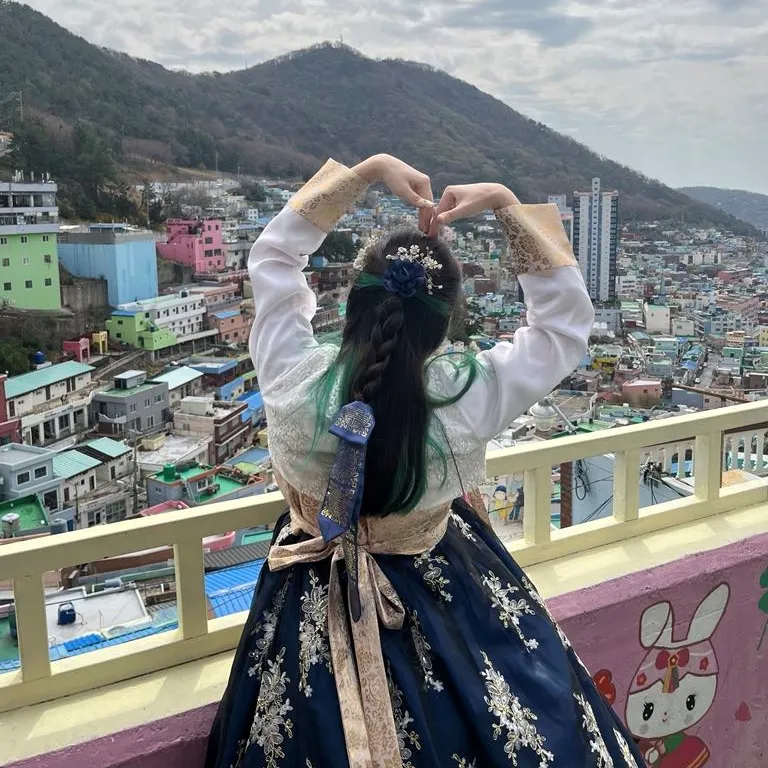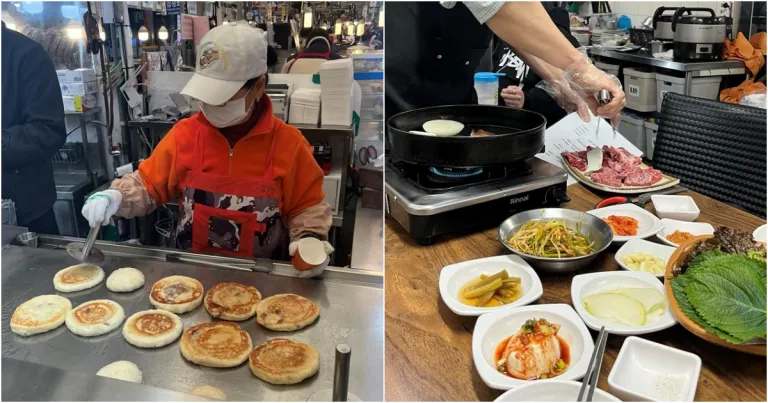想要趁着周末或公共假期在国内旅游, 但只能想到槟城极乐寺、 吉隆坡双峰塔、 热浪岛, 又觉得这些地方太主流、 人又多、 而且没新鲜感了吗? 今天,小编就要来向大家介绍一些马来西亚可媲美国外、 鲜为人知的冷门景点吧·!
10 Things to Know Before Travelling to South Korea as a Malaysian [2025 Guide]

Planning a trip to South Korea in 2025? Whether you're dreaming of cherry blossoms, K-pop concerts, or street food in Myeongdong, there's a lot to prepare for, especially if it’s your first time visiting. Here's your essential guide with 10 things Malaysians should know before travelling to South Korea!
South Korea travel tips for Malaysians
1. Entry Requirements?

Good news! As of 2025, Malaysian passport holders can enter South Korea visa-free for up to 90 days for tourism. Just make sure your passport has at least 6 months’ validity, and you have a return flight ticket as proof of exit.
Although visa-free, a K-ETA (Korea Electronic Travel Authorisation) is still needed for Malaysians entering South Korea. The process is online and typically costs around ₩10,000 (~RM35).
2. Not Everyone Speaks English, But You’ll Be Fine

While you’ll find English signage in major cities like Seoul and Busan, English proficiency among locals is generally limited, especially among the older generation. Don’t let that stop you, they will try their best to assist.
Nevertheless, we still recommend using translation apps like Papago (more accurate for Korean than Google Translate), as well as learning a few simple phrases. For instance, annyeonghaseyo (hello) and kamsahamnida (thank you)!
3. Both cash and cards are good
South Korea is a highly digital society, and credit/debit cards are accepted nearly everywhere, from restaurants and shops to even taxis. However, it’s smart to keep some cash on hand for small street stalls, rural shops, or traditional markets.
4. Halal food?

Finding halal food in Korea is easier now than in previous years. Seoul, in particular, has a growing number of halal-certified restaurants, especially in Itaewon, which has a sizeable Muslim community. Look for Halal Korea certification or verified listings on platforms like Zabihah, Halal Navi, or Google Maps reviews.
So, yes, halal food in South Korea is more accessible than you think! You can enjoy halal Korean dishes like bulgogi, samgyetang, and tteokbokki at popular Muslim-friendly restaurants such as Eid, Makan Halal Korean Restaurant, and Murree in Seoul. Beyond halal-certified options, seafood and vegetarian meals are also widely available across local eateries, making it easier for Muslim travellers to enjoy Korea’s vibrant food culture without worry.
5. Getting Around
Public transport in South Korea is fast, clean, and foreigner-friendly. The subway systems in cities like Seoul and Busan are extensive, with announcements and signs in English. Buses are punctual and reasonably priced, while taxis are convenient (but pricier).
When getting around South Korea, a few essentials can make your journey smoother. The T-Money Card is a must-have. It's a rechargeable smart card that can be used on subways, buses, and even taxis, offering both convenience and small fare discounts. For navigation, Naver Map or KakaoMap are far more reliable than Google Maps in Korea, especially for public transport routes and walking directions.

If you're planning to travel between cities, the KTX high-speed rail is a fast and efficient option, with routes like Seoul to Busan taking under three hours, making long-distance travel both comfortable and time-saving.
6. Must-have Mobile Apps
Did you know that Google Maps and Google Translate aren't popular in South Korea? When travelling to South Korea, an essential app to have is Papago, a powerful translation tool developed specifically for Korean. It’s more accurate than Google Translate when it comes to Korean-English translations and is especially helpful when reading menus, signs, or communicating with locals.
Besides, we recommend getting the Naver Map for navigating, as it is more accurate than Google Maps. It's available in English, too.
What's more, the Korail or Let’s Korail App is essential for travellers planning to explore South Korea by train. It allows you to conveniently book, manage, and check schedules for high-speed KTX trains and other intercity rail services. You can also access its website for information like seat selection and booking history.
7. The Korean etiquette
Understanding Korean etiquette can help you make a respectful impression during your trip. A slight bow is a common way to greet someone and show politeness. On public transport, it’s expected to speak quietly or stay silent to avoid disturbing others. When giving or receiving items — like money, gifts, or even your passport — always use both hands as a sign of respect. These small gestures go a long way in showing appreciation for Korean culture.
8. Pack According to Season

Korea’s seasons are extreme compared to Malaysia's. Winters (December to February) can drop below 0°C, so pack proper thermal wear and jackets. Spring and autumn are mild and great for sightseeing, while summers are hot and humid. Don’t forget sunblock and breathable clothes!
9. Tax Refunds for Tourists

Foreign tourists are eligible for tax refunds on purchases over 30,000 KRW (~RM112) at participating stores. Look for the “Tax-Free” sign and bring your passport when shopping. Refunds can be processed at the airport or at in-store kiosks. Some shops, like Olive Young, will even deduct the tax directly when you pay, as long as you show them your passport.
10. Bring a Travel Adapter and Power Bank
Don’t forget to pack a travel adapter and a power bank for your trip to South Korea. The country uses the 220v voltage with Type C and F plugs, which may be different from what’s used in Malaysia. A universal adapter ensures your devices stay charged throughout your journey. Since you’ll likely be out exploring all day, a power bank is also essential to keep your phone powered, especially if you’re relying on apps for maps, translation, or train schedules. Staying connected and charged will make your trip smoother and stress-free.
All images are credited to Cecelia Chang
Published on
About Author
Cecelia Chang
RECOMMENDED READS
本地旅游好好玩! 马来西亚 10个 2025 必游的仙境 【Pulau Langkawi爆红住宿TOP 8】超高颜值的酒店,照片请来一波! 9月16日。。。约吗?
【亚洲跨年烟花TOP 8】带上家人和另一半欣赏爆炸式的浪漫! 每年的跨年大集会, 除了有歌舞升平的好气象之外, 还会有各种烟花大会, 迎接2020的到来~ 为你推荐这些超吸睛的烟火会, 还不赶快带上你最亲爱的去欣赏这份免费的浪漫情怀?!
【冬季篇】日本必去打卡的秘境TOP 10✅ 日本, 是亚洲一个神奇的旅游胜地。 但凡去过一次, 就会上瘾, 然后就会想要探索那里的春夏秋冬。 日本的冬季, 可以达到零下的温度, 甚至有很多越冷越受欢迎的景点。值得一提的是, 日本的冬季集浪漫、 萧条、 迷人为一身。 你也可以趁着冬季来到北海道滑雪, 或是泡一个美美的温泉! 无以伦比的旅行就此开始。
【学生党付得起的价位】新加坡超美味的豪华美食清单TOP 8! 以前总听别人说新加坡的食物不好吃, 那是因为不会吃吧! ~当然, 要享受到顶级的服务和美食, 钱包就一定不能太省啦! 毕竟马币兑新币汇率真的太高了。 不过, 为了吃真的不能省。 如果接下来想逗女朋友开心, 或是想慰劳一下家人, 就去邻国趴趴走吧!
RECENT ARTICLES
槟城攻略:8个上山下海的体验,室内户外景点都有得玩! 槟城绝对会让你玩到不想回家!
Bukit Bintang 武吉免登将华丽变身,誓言媲美东京银座、新加坡乌节路! 2026 马来西亚旅游年要来啦!
双台风预警!重创越南、菲律宾,前往东南亚旅游须警惕! 马来西亚旅客须密切关注旅行风险!
马来西亚护照荣登 2025年全球第三最强护照! 与芬兰、德国、意大利、卢森堡等国家并列第三!
A Malaysian Traveller’s Guide to Nature Wonders in Western Australia Waterfall spots in Western Autralia you have to visit!

